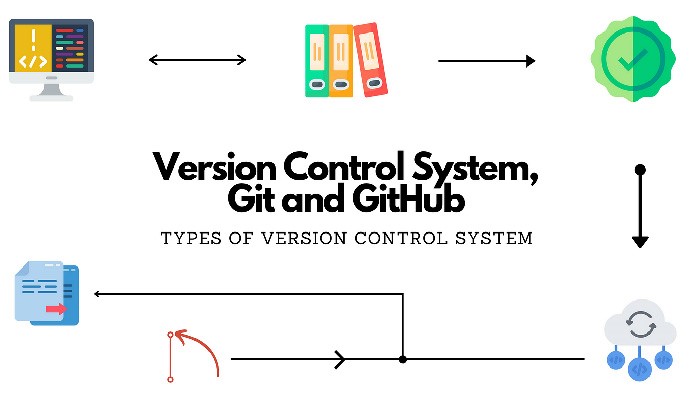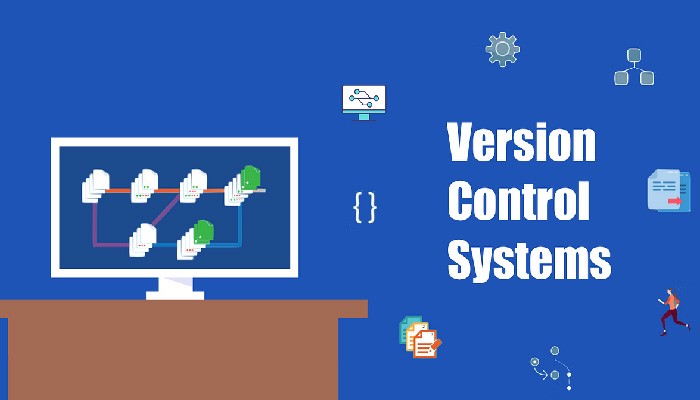Tracking the Code: The Essential Role of Version Control Systems
Are you tired of the chaos that comes with managing multiple versions of your code? Do you yearn for a streamlined way to track changes, collaborate seamlessly, and safeguard your project’s integrity? Look no further than Version Control Systems! In this blog post, we’ll dive into the world of Version Control Systems VCS, exploring its types, benefits, challenges, and tips for effective implementation. Get ready to unlock the power of version control and revolutionize your development process!

What is a Version Control System?
At its core, a Version Control System (VCS) is like a time machine for your code. It tracks every change made to files, creating a historical record of edits and updates. This means you can easily revert to previous versions if needed, ensuring project continuity and reducing the risk of errors.
Think of VCS as a collaborative playground where developers can work together on projects without stepping on each other’s toes. By providing mechanisms for merging changes and resolving conflicts, VCS promotes teamwork and enhances productivity.
With a VCS in place, gone are the days of frantically searching through folders for that one elusive file or worrying about losing crucial code snippets? Instead, you have a centralized repository where all project assets are stored securely and organized logically.
Whether you’re working solo or as part of a team, embracing a Version Control System is like adding an extra layer of protection to your coding endeavors.
Types of Version Control Systems
When it comes to version control systems, there are primarily two types: centralized and distributed.
Centralized version control systems like SVN have a single central server that stores all versions of a file, allowing users to check out the latest version and make changes locally before committing them back to the central repository.
On the other hand, distributed version control systems like Git create multiple mirrored repositories where each user has their own local copy of the entire project history. This allows for greater flexibility and collaboration among team members without being dependent on a central server.
Both types have their strengths and weaknesses, so choosing the right one depend on your specific project requirements and team dynamics.
Benefits of Using a Version Control System
Using a Version Control System offers numerous benefits to developers and teams working on software projects. One key advantage is the ability to track changes made to code over time, allowing for easy identification of who made what changes and when they were implemented. This level of transparency enhances collaboration among team members by providing a clear history of project evolution.
Another benefit is the capability to revert back to previous versions of the code if needed, safeguarding against any potential errors or bugs introduced in newer iterations. This feature ensures that project stability is maintained at all times, reducing risks associated with making irreversible mistakes.
Moreover, Version Control Systems facilitate seamless branching and merging workflows, enabling parallel development efforts without disrupting the main codebase. This flexibility streamlines the process of working on different features simultaneously while ensuring smooth integration once completed.
Furthermore, utilizing a Version Control System promotes better organization and documentation of code changes, fostering a more structured approach to project management. By maintaining a centralized repository for all code modifications, teams can easily collaborate and stay informed about ongoing developments within the project.
How to Choose the Right Version Control System for Your Project
When considering which version control system (VCS) to use for your project, it’s essential to evaluate the specific needs and requirements of your team.
Start by assessing the size and complexity of your project as well as the number of contributors involved. Different VCSs offer varying features like branching, merging, and conflict resolution that can impact collaboration efficiency.
Consider the learning curve associated with each VCS. Some systems may be more user-friendly for beginners, while others provide advanced functionalities tailored for experienced developers.
Compatibility with your existing tools and platforms is another crucial factor to consider when selecting a VCS. Ensure seamless integration to avoid disruptions in workflow and productivity.
Take into account factors like security measures, scalability options, and community support when making your decision. By carefully evaluating these aspects, you can choose the right version control system that best suits the unique demands of your project.
Common Challenges and Solutions in Using a Version Control System
One common challenge when using a Version Control System is dealing with merge conflicts. These occur when two or more developers make changes to the same code simultaneously, resulting in conflicts that need to be resolved.
A solution to this is ensuring communication among team members to avoid overlapping work and regularly pulling changes from the main repository. This helps minimize the chances of conflicting edits.
Another challenge can be mistakenly deleting files or making irreversible changes. To address this, it’s crucial to make frequent commits and utilize branching strategies effectively. Branching allows for experimentation without affecting the main codebase directly.
Moreover, maintaining a clean commit history can also pose difficulties. It’s essential to follow best practices such as writing clear commit messages and squashing irrelevant commits before merging into the main branch.
By being proactive in addressing these challenges and implementing effective solutions, teams can optimize their Version Control System usage for streamlined collaboration and efficient project management.
Tips for Effective Use of a Version Control System
When it comes to effectively using a Version Control System (VCS), there are several tips that can help streamline your workflow and collaboration efforts.
Make sure to use meaningful commit messages when saving changes. This will not only help you track the progress of your project but also assist others in understanding the purpose of each change.
Take advantage of branching and merging features offered by VCS platforms. Branching allows you to work on new features or fixes without disrupting the main codebase, while merging helps consolidate changes back into the main branch.
Additionally, regularly pull updates from the central repository to stay up-to-date with any changes made by other team members. Communication is key in collaborative projects, so be sure to communicate with your team about any significant changes or issues you encounter.
Familiarize yourself with advanced VCS functionalities like tagging releases for easier navigation through different versions of your project. By implementing these tips into your VCS workflow, you can enhance productivity and ensure smooth project development processes.
Conclusion
In the fast-paced world of software development, version control systems play a crucial role in ensuring project success. By effectively managing changes and facilitating collaboration among team members, Version Control Systems are essential tools for any modern development project.
Whether you choose a centralized or distributed system, the benefits of using a Version Control System are clear: improved organization, better collaboration, increased efficiency, and enhanced security. With careful consideration of your project requirements and team dynamics, you can select the right Version Control System to meet your needs.
While challenges may arise when implementing a Version Control System, such as conflicts or learning curves, there are solutions available to address these issues. By following best practices and utilizing helpful tips for effective use of version control systems, teams can maximize their productivity and streamline their workflow.
Version Control Systems are indispensable tools that enable developers to track changes efficiently and collaborate seamlessly on projects. By understanding the types of VCS available, weighing their benefits against potential challenges, and implementing best practices for optimal usage – teams can harness the full power of version control systems to drive success in their software development endeavors.



